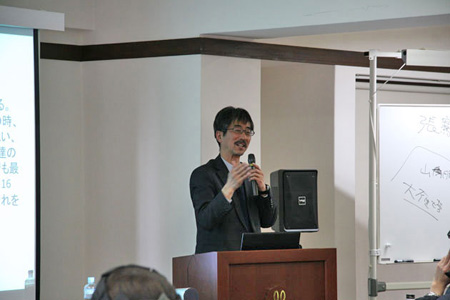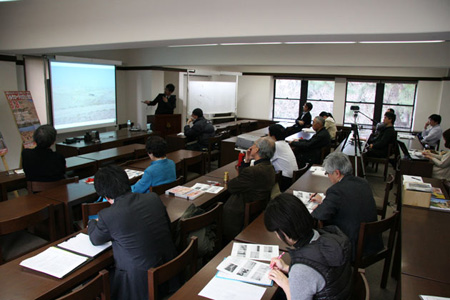News & Events
ITCS Seminar #5(2013 Academic Year)
Ruins in Xinjiang Uyghur Autonomous Region, China
Date:Saturday, March 8, 2014, 13:30-17:00
Venue:K-222, the Koshien Hall, MWU
Lecturer:Mr. Kazuya Yamauchi (Head, Regional Environment Section Japan Center for International Cooperation in Conservation National Research Institute for Cultural Properties, Tokyo, Japan)

The Lecture by Mr. Kazuya Yamauchi
MWU held a series of seminar titled “The Culture and History of the Silk Road” inviting five foremost experts as lecturers. This time, we asked archaeologist Kazuya Yamauchi of National Research Institute for Cultural Properties, Tokyo, to give a lecture as titled above.
The lecture began with the geographical explanation of three major routes of the Silk Road, i.e. “Northern Route of Tian-shan Mountains”, “Southern Route of Tian-shan Mountains” and “Southern Route in the Western Region” followed by the introduction of the ruins in Xinjiang Uyghur Autonomous Region. Mr. Yamauchi described the various ruins introducing the conditions of restoration and preservation based on his experience. The ruins introduced included Kizil Gaha Beacon Tower, which is said to date back to Qianhan Period (over 2,000 years ago), ruins of Gaochang, which is associated with Xuanzang, the old city of Jiaohe, both located in outskirt Turpan, Site of Bashbaliq City, Kizil caves, the largest of the caves in the Uyghur region, and Subashi ruins, the largest Buddhist temple in Kuqa. Mr.Yamauchi ended the lecture suggesting the need to see the Silk Road in a comprehensive way not only from the aspect of trade route but also from that of people’s life and natural surroundings.

The Lecture by Mr. Kazuya Yamauchi
